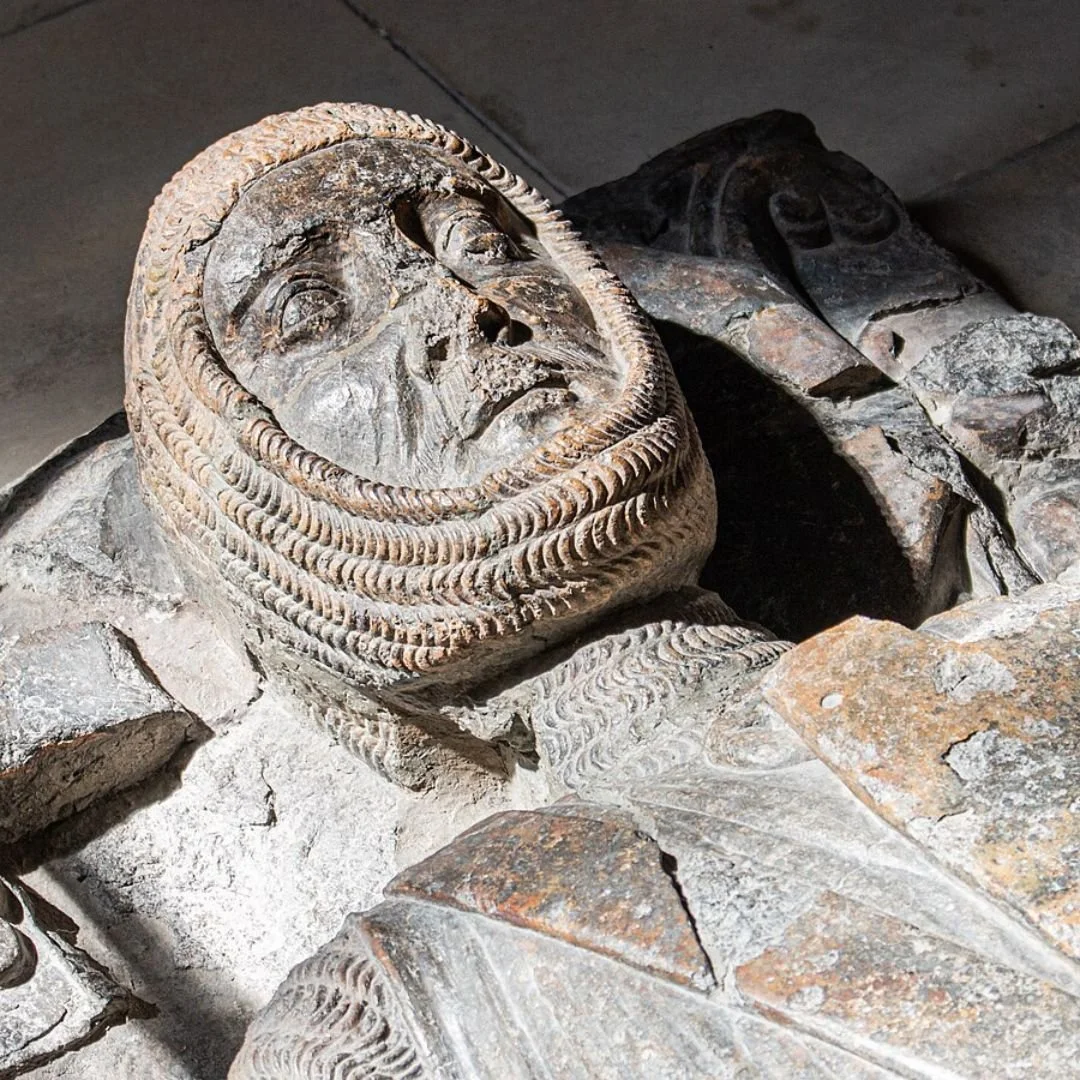William Marshal: The Greatest Knight Who Ever Lived
William Marshal (1146 – 1219), is a legendary figure of the High Middle Ages, often celebrated by his contemporaries and famously known as "the greatest knight that ever lived."
His remarkable life spanned the reigns of five English monarchs, from Henry II to Henry III, and saw him rise from a landless younger son of a minor nobleman to one of the most powerful men in the kingdom.
In his seventies, he saved England from civil war and reissued Magna Carta, cementing his legacy as the model of chivalry.
His stone effigy (pictured below) still lies in Temple Church, London. This, is his incredible story.
At the age of five, young William was surrendered as a hostage to King Stephen to ensure his father's compliance during a siege.
When his father defied the king, Stephen threatened to hang the boy.
The elder Marshal, believing the king would not stoop so low, famously declared he had "the hammer and the anvil" to forge better sons.
Stephen, impressed by the child's charisma, spared him, an early brush with death that surely shaped his future resilience.
With no lands or inheritance, William's path was the life of a professional knight.
He was sent to Normandy to be trained in the household of William de Tancarville.
Knighted around 1166, he entered the brutal yet lucrative world of medieval tournaments, which were essentially staged, full-scale battles fought for ransom and glory.
For over a decade, William became a superstar of the tournament circuit.
His physical strength, prowess, horsemanship, and tactical cunning allowed him to capture and ransom hundreds of knights, horses, and armour.
According to his biography, the "Histoire de Guillaume le Maréchal," he was a master of the melee, accumulating enough wealth and fame to catch the attention of the highest nobles.
William's true rise to power began with his connection to the Angevin dynasty, the ruling house of England, which also held vast French territories.
In 1170, William was appointed tutor-in-arms to Prince Henry, the eldest son of King Henry II, who was crowned as "Henry the Young King" during his father's lifetime.
King Henry II
William served as the prince's military mentor, adviser, and tournament manager for over a decade. He was the one who personally knighted the Young King.
After the Young King's death in 1183, William honoured the prince's dying wish by undertaking a Crusade to the Holy Land, spending two years fighting for the Kingdom of Jerusalem.
Upon his return, he re-entered the service of King Henry II.
His loyalty was absolute, even to the point where, in a famous incident in 1189, he personally charged Henry's rebellious son, Richard the Lionheart, during a retreat, intentionally killing Richard's horse to protect the King, proving his unwavering dedication.
When Henry II died in 1189, the now King Richard I (the man whose horse William had slain) held no grudge.
Impressed by Marshal’s courage and diplomacy, Richard kept him in royal service and, more significantly, rewarded him with marriage to Isabel de Clare.
King Richard I
Isabel was the sole heiress of Richard "Strongbow" de Clare, a powerful Anglo-Norman lord.
This marriage instantly transformed the landless knight into one of the wealthiest and most influential magnates in the Anglo-Norman world, giving him title to the Lordship of Leinster in Ireland, significant lands in Wales, Normandy, and England, and the later title of Earl of Pembroke.
William's career continued through the reigns of Richard I and his brother, King John.
Despite a frequently tumultuous and strained relationship with King John, William remained fundamentally loyal to the crown.
When the rebellious barons forced King John to seal the Magna Carta at Runnymede, William Marshal was present and played a key advisory role.
He stood by the King, likely believing that even a bad king was better than civil war.
King John signing the Magna Carta
William Marshal's involvement at Runnymede was deeply significant, as he acted as a crucial moderator between the tyrannical King John and the outraged barons.
He was one of the few men trusted by both sides.
Marshal's name appears prominently as one of the witnesses to the Charter, and he was a vital part of the small, loyalist faction that tried to preserve the King's dignity while acknowledging the need for reform.
His presence and influence helped bring the volatile situation to a peaceful (if temporary) conclusion, highlighting his reputation for honour and political balance even amidst outright rebellion.
King John’s death in 1216 plunged England into the First Barons' War, with French Prince Louis claiming the throne.
At the age of 70, William Marshal was appointed Regent of England and protector of the nine year-old King Henry III.
In 1217, Marshal, now in his eighth decade, led the royalist forces into the decisive Battle of Lincoln, personally leading the charge.
The overwhelming victory effectively ended the French invasion and secured the throne for the young Henry III.
As Regent, Marshal showed great political wisdom, re-issuing an amended version of the Magna Carta to appease the remaining barons, securing a lasting peace and ensuring the survival of this foundational document of English law.
William Marshal died peacefully in 1219 at the age of 73 and was buried in the Temple Church in London.
His life is a near-perfect embodiment of the medieval ideal of chivalry - loyalty, military prowess, and honour.
His career provides a unique chronicle of English history, as he served faithfully through the entire period of Angevin rule.
The very existence of his biography, the Histoire de Guillaume le Maréchal, is a testament to his fame; it is the only surviving written biography of a non-royal individual from the entire High Middle Ages.
He was truly the greatest knight who ever lived.
If you enjoyed this blog post, please follow Exploring GB on Facebook for more!
Don’t forget to check out our latest posts below!



















